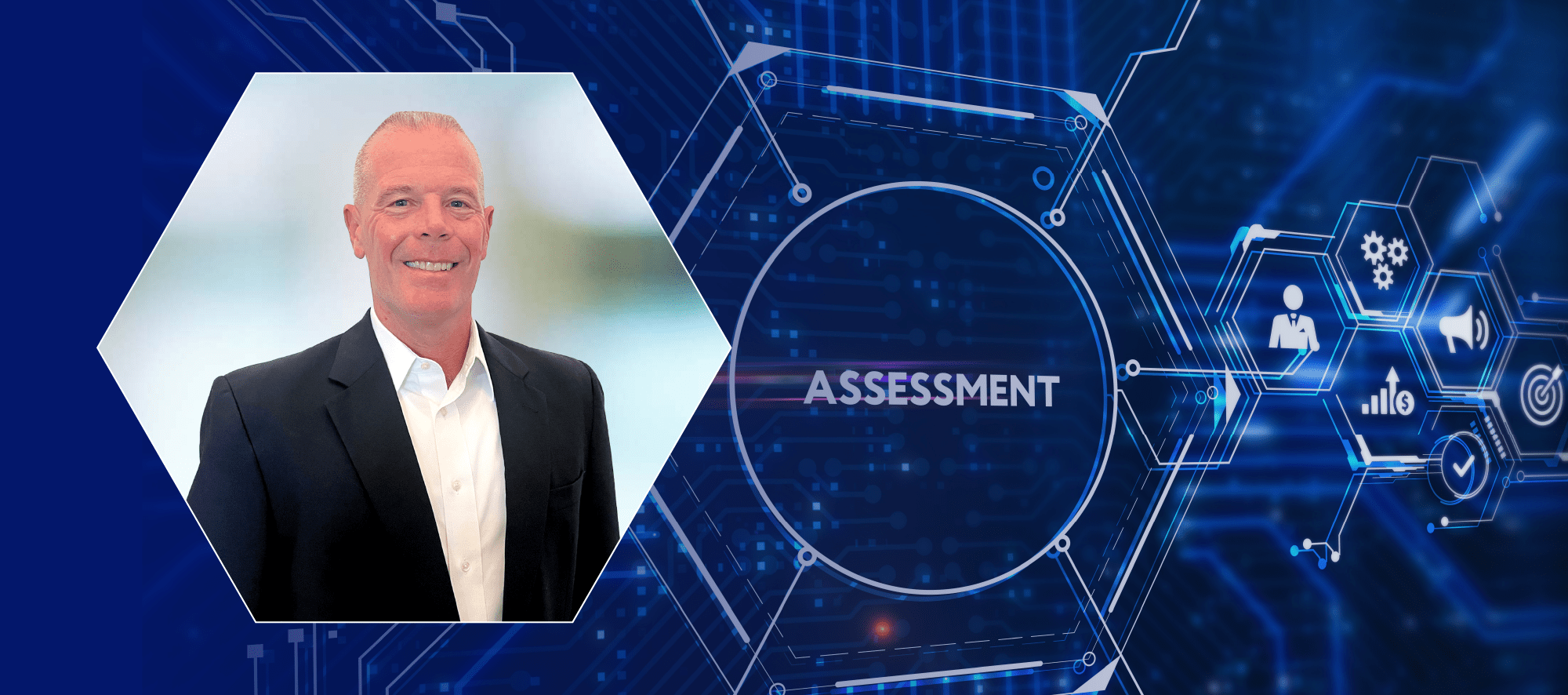
LMI’s Dawson Oslund Talks Technology Assessment Methodology and Tools for Federal Agency Solutioning
Dawson Oslund Performance Optimization, Data Science & Engineering
How would you describe LMI’s approach to technology assessment?
We first need to understand why we focus on technology assessment and what it looks like at LMI. The drive to develop new technologies is relentless, and advances are continually being made globally at all levels of industry, academia, and governments. These advances have implications on U.S. national security, our economy, and even our cultural evolution. From a national security perspective, the accessibility of these technologies by all actors—friendly and adversarial—compels the U.S. Government to anticipate the implications of new technologies on the battlefield and how competitors and adversaries will employ them. From an economic and cultural standpoint, anticipating technology trends enables the U.S. Government to embrace and even influence technology applications and potential disruptions and target its limited research and development investments.
LMI offers a structured, systematic, tailorable, and integrated technology assessment methodology to explore and understand the technology landscape relevant to an organization’s mission. From detecting technology trends and forecasting emerging technologies 10 to 20 years in the future to identifying and showcasing present-day technologies with near-term application, we use quantitative and qualitative methods to help our customers manage their unique technological uncertainties and find potential solutions to existing or emerging capability gaps and needs. We offer five tools that can be tailored to the customer’s specific needs:
- Horizon Scanning—mid- to long-term forecasting of emerging technology trends or anomalies using qualitative methods to help inform investment decisions
- Technology Watch—mid- to long-term forecasting of specific existing or emerging technologies to identify the U.S.’s global position and help inform investment decisions
- Technology Scouting—identifying and evaluating existing or emerging technologies that may satisfy a customer’s near- to long-term mission needs
- Market Analysis—near- to mid-term quantitative and qualitative assessment of a market of interest to interpret the current technology landscape and forecast the future landscape
- Technology Showcasing—identifying, demonstrating, and evaluating existing technologies and prototypes to assess their ability to satisfy a customer’s near-term and emerging needs
LMI offers a structured, systematic, tailorable, and integrated technology assessment methodology to explore and understand the technology landscape relevant to an organization’s mission.
What are some opportunities you see for federal agencies for the utilization of technology assessment? Can you give an example?
We’ve found increasing applicability of our Technology Assessment capability across the federal government. One of the opportunities is an effort to help the Office of the Deputy Assistant Secretary of Defense, Nuclear, Chemical and Biological Programs, Chemical and Biological Defense Programs (ODASD NCB/CBD) identify, assess, and develop existing and emerging technologies to improve DoD’s readiness and resiliency for chemical and biological threats. Our Technology Assessment capability can help federal agencies apply, project, assess, and plan for the opportunities and risks associated with existing and emerging technologies.
An exciting Technology Assessment capability that we are maturing is the Data Driven Horizon Scanning (DDHS) tool. LMI Forge™ developed a DDHS prototype to help our Federal Government partners stay abreast of disruptive and emerging technologies and trends that may help them accomplish their missions. DDHS leverages data across a technology’s lifecycle (from early research to productization) and uses natural language processing to identify and track emerging trends. We are currently assessing the strength and maturity of technologies associated with human-machine interface (including embedded brain-computer interface as well as wearables).
What are some of the most successful and interesting past performance projects you’ve had the opportunity to work on here at LMI?
Among the numerous projects we have worked at LMI, three stand out. First, in support of Technology Watch programs at the Biomedical Advanced Research and Development Authority (BARDA) and Joint Program Executive Office for Chemical, Biological, Radiological and Nuclear Defense (JPEO-CBRND), and communications with National Institute of Allergy and Infectious Diseases (NIAID), our experts evaluated the technical capabilities and product maturity levels of vaccine, therapeutic, and diagnostic products for a thousand companies resulting in 10 or more contracts in the pipeline at JPEO-CBRND with a value over $200 million over the next three years. Second, we provide the U.S. Army Medical Material Development Activity (USAMMDA) full lifecycle support in the modernization of medical devices and medical support equipment that enhance readiness and maximize survival of medical casualties on the battlefield. The latest medical device that is currently being modernized and supported by our team is the largest modernization project in the U.S. military medical community and is valued at approximately $50 million. Our team has supported this project from its initial stages of technology scouting to delivering and testing these devices in their designated fielding locations. Third, we support the Department of Homeland Security Science and Technology Directorate’s National Urban Security Technology Laboratory (NUSTL) in helping first responders prepare, protect, and respond to homeland security threats. LMI’s team conducts market research, helps assess and select technologies to be evaluated in operational assessments and experiments, and assists in planning, executing, and reporting on these test and evaluation activities.
What does success look like on your team?
Our team’s success is rooted in our customers’ success, and our customers’ successes come in various forms. We walk our customers through a standard, repeatable, and tailorable process to understand their mission, discover their needs, and research and analyze data to collaboratively meet those needs. From helping our customers gain insight into technology, market trends, and anomalies that informs their investment and near-term acquisition decisions, to helping them identify and evaluate potential technology solutions to existing or emerging capability gaps, to providing insight into the state-of-the-art that reduces technology surprise and technology risk, when our customers clearly understand their capability needs and they are satisfied with solutions that we have collaboratively identified and/or developed, we consider that success.
LMI Forge™ developed a DDHS prototype to help our Federal Government partners stay abreast of disruptive and emerging technologies and trends that may help them accomplish their missions.
What differentiates LMI’s experts in technology assessment?
Our talented staff, broad expertise, and flexible approach enable us to tailor the Technology Assessment methodologies to satisfy our customers’ needs. Our staff have expertise in technology scouting and assessments; horizon scanning; working with non-traditional innovators, entrepreneurs, and start-ups through a venture capital network; and working with customers to plan, coordinate, and execute technology showcase events (e.g., demonstrations, experiments). In addition to our Technology Assessment experts, many of whom have 5–15+ years of experience, we integrate LMI specialists in digital and analytical solutions skilled in creating, modifying, and shaping tools and approaches to satisfy customer needs. Finally, through our Applied Research & Partnerships, our customers gain insight into and access to a vast innovation ecosystem that includes universities, labs, industry, accelerators, incubators, and startups.
-
More About the Forge™
 The New Speed of Possible™
The New Speed of Possible™Forge™ Technology Studio
Leveraging agile methods and human-centered design, the Forge™ empowers us to deliver technology solutions rapidly.
More About the Forge™
-
More About How LMI Innovates
 Innovation at the Pace of Need™
Innovation at the Pace of Need™How We Innovate
Operating in an innovation ecosystem, we combine market-leading technical resources, strategic partnerships, and agile development capabilities to accelerate mission success.
More About How LMI Innovates


Dawson Oslund
Principal, Management StrategyAs a senior leader of LMI’s technology assessment practice, Dawson helps customers understand new capabilities and explore potential solutions to current and future mission requirements. Prior to LMI, Oslund was a senior program analyst with The Tauri Group, which LMI acquired in 2019.


